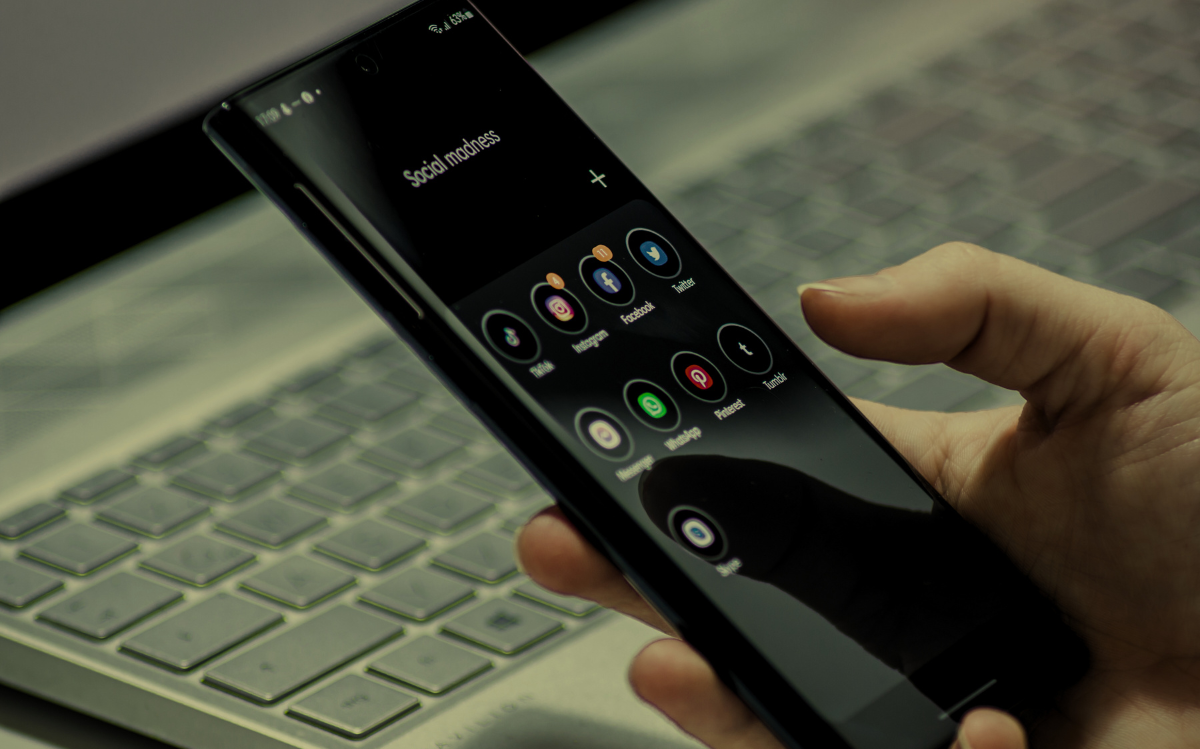If you’re a low-income resident in California, you can apply for a free or discounted phone through the California LifeLine Program. [1] Whether you’re enrolled in government aid or meet income limits, the process is simple, choose a provider, apply, submit proof, and activate your service.
Key Takeaway
- You qualify if you receive public assistance or meet income limits.
- One Lifeline benefit is allowed per household, choose wisely.
- You must renew your benefit each year to avoid losing service.
California LifeLine Program Overview
What It Offers: Free or Discounted Cell/Home Phone Service
Back when landlines buzzed and cell phones were bricks, phone service was a utility. Today, it’s a lifeline, pun not intended but entirely true. The California LifeLine Program steps in here, offering free or discounted phone service to low-income households. Most providers throw in a smartphone too. Talk, text, and a modest amount of data come bundled with zero-dollar bills, at least for the customer.
This isn’t about perks. It’s access. Emergency calls. Job interviews. Keeping up with school alerts. In a state where rent can swallow most of your paycheck, not paying for a phone means breathing room.
Who It’s For: Low-Income Households in California
To qualify, a household must meet the program’s definition of low income, either by participating in public assistance or earning below the state threshold. It’s for people juggling groceries against utilities, not influencers gaming the system.
You don’t need to be on the streets to qualify. A surprising number of families hovering just above minimum wage are eligible, and they often don’t know it.
One Discount Rule: One Lifeline Benefit Per Household
The rule’s simple but strict. One phone line per household. You don’t get one for each roommate, cousin, or ex sleeping on your couch. Unless you’re part of a teletypewriter program or a qualifying disability exemption, it’s a one-device deal. Break that rule, and you’re off the program. And maybe facing a fine.
Eligibility Requirements
Qualifying Public Assistance Programs
The surest path to eligibility is being enrolled in programs the state already recognizes as safety nets. These include:
- Medi-Cal
- SSI (Supplemental Security Income)
- CalFresh (California’s food stamps)
- Section 8 Housing
- WIC
- National School Lunch Program (free lunch tier)
- LIHEAP (energy assistance)
Tribal residents have their own route too:
- Tribal TANF
- Bureau of Indian Affairs General Assistance [2]
- Head Start (if income-based)
Just one of these? You’re good. No need to stack benefits like poker chips.
Income-Based Eligibility
Not enrolled in any program? No problem. You can still qualify based on income. Here’s how it breaks down for June 2024 to May 2025:
- 1 person: $23,400
- 2 people: $31,700
- 3 people: $40,000
- 4 people: $48,400
- Add $8,400 for each additional household member
“Household income” includes everything, wages, social security, unemployment, alimony. Yes, even that under-the-table job you think nobody sees.
Calculate honestly. They do check.
Step-by-Step Application Process

Step 1 – Choose an Authorized Provider
Start by picking a provider that’s approved for California LifeLine. Some familiar names:
- Assurance Wireless
- TruConnect
- enTouch
- StandUp Wireless
Don’t pick at random. Check coverage in your zip code. Ask about phone types. Some offer basic smartphones. Others hand out low-end Androids with sketchy battery life. Compare plans too. One might offer more hotspot data, another might throttle speeds after 3GB.
Step 2 – Apply Through the Provider
Most providers let you apply online, but you can also call or mail in your application. Walk-in offices still exist if you’re the face-to-face type.
Processing usually takes a week or two. Some are faster, especially if you’re submitting docs online.
You’ll get a confirmation number. Don’t lose it.
Step 3 – Submit Proof of Eligibility
Now the paperwork. If you’re applying through a program:
- Show a current benefit letter
- Provide a copy of your ID card from the program
- Some accept electronic versions
If you’re going the income route:
- Use pay stubs (from the last 3 months)
- Tax return (Form 1040 or 1040EZ)
- SSA or unemployment benefit letters
- Child support verification if it adds up
Submitting fake or expired documents? That’s a fast track to rejection.
Step 4 – Application Review
Your application goes to the California LifeLine Administrator or CPUC. They don’t rubber stamp anything. They actually verify.
Expect a decision in 5 to 10 business days. If they need more info, they’ll let you know. But the clock starts ticking. You’ll have a short window to respond.
Step 5 – Service Activation
Once approved, your provider ships the phone. Or activates service on your current one.
Setup is usually plug-and-play. Phone arrives, power it on, make a call. You’ll get a number, voicemail, and sometimes a welcome text with your plan details.
Don’t toss the packaging. You might need that info during renewal.
Maintaining Your Lifeline Benefit
Annual Renewal Requirements
This isn’t a “set it and forget it” program. Each year, you have to prove you’re still eligible.
You’ll get a renewal notice by mail or email. Most let you renew online now, which is faster and less likely to get lost in a stack of junk mail.
Miss the renewal? Your service is cut. No reminders. No grace period.
Usage Rules to Stay Eligible
To keep your service, you must actually use it. Call, text, use data. Something. Anything.
At least once every 30 days. No exceptions.
If you go dark for too long, they’ll assume you don’t need it. And cut you off.
Switching or Transferring Providers
How to Request a Transfer
You’re not married to one provider. Want to switch? You can.
Start the transfer with your new provider. They’ll initiate the process with the CPUC. Once approved, your service moves over. You don’t need to re-qualify.
But you can’t jump around too often. There’s a 60-day freeze after each switch. Abuse it, and you might get flagged.
Bringing Your Own Phone
Got a phone you love? You might be able to keep it.
But it has to be unlocked. And compatible with the new carrier’s network. GSM phones usually work across T-Mobile-based providers. CDMA phones don’t play as nice.
Check before you switch. You don’t want to end up with a SIM card and no working phone.
Common Reasons for Rejection
Incomplete Applications or Late Submissions
The biggest mistake? Rushing and missing a form. Or submitting expired documents. Or forgetting your signature.
Applications must be complete. No blanks. No “see attached.”
Already Receiving Lifeline from Another Provider
The system checks for duplicates. If you already have Lifeline with another provider, even if you forgot, it’ll show.
You’ll get rejected. Or booted off the other plan.
Invalid or Missing Documentation
Expired letters. Cropped screenshots. Scribbled income estimates. That stuff doesn’t fly.
Documents need to be current, legible, and specific to you.
False or Conflicting Information
If your name doesn’t match across documents, or you fudge your income, it shows up. The system flags mismatches.
You can appeal, but it’s a long road back.
What to Do If You’re Denied
Appeal Through CPUC Consumer Affairs
If you think the rejection was wrong, file an appeal. CPUC Consumer Affairs takes complaints. They actually read them.
Include your application number. And whatever proof you think clears you.
Reapply With Corrected Information
If it’s your fault, wrong docs, missed form, just reapply. Fix the mistake. Try again.
There’s no punishment for applying twice.
Timeline for Reapplication
You don’t need to wait a year. Once the error’s fixed, you can reapply right away. Sometimes even within the same month.
But triple-check your docs. Don’t make the same mistake twice.
Required Documents Checklist
Income Verification
- Pay stubs from the last 3 months
- 1040 or 1040EZ tax returns
- Social Security statements
- Unemployment letters
- Alimony or child support papers
You don’t need all of these. Just enough to prove your total income.
Public Assistance Verification
- Program ID cards
- Approval letters
- Benefit statements from the last 6 months
Electronic documents are usually fine if they show your name and dates.
Tribal-Specific Documentation
- Letters from the Bureau of Indian Affairs
- Tribal TANF statements
- Tribal income tax returns
Not every provider handles tribal cases well. Pick one that does.
Available Plans and Features
Plan Options by Provider
Most plans include:
- Unlimited talk and text
- At least 3GB of data
- A free basic smartphone
Some plans give more. Assurance Wireless sometimes offers 5GB. TruConnect throws in international calling for Mexico and Canada.
Shop around before settling.
Add-On Services and Upgrades
Want more data? You can buy it. Usually $5 to $10 per gig.
Want a better phone? Some offer upgrade phones for $25 to $50.
International calling plans are extra, but available.
Device Policies
You can’t always keep the phone if you leave the program.
Most are locked to the provider for 12 months. Break it, lose it, or tamper with it, and you might be on the hook.
Check the fine print before making any changes.
Consumer Support and Help Resources
Contact Info for California LifeLine
General questions? Call the California LifeLine Call Center: 1-866-272-0349
Need help with your application? Contact the Administrator: 1-877-858-7463
Support from Individual Providers
Each provider has its own support line:
- Assurance Wireless: 1-888-321-5880
- TruConnect: 1-800-430-0443
- enTouch Wireless: 1-866-488-8719
- StandUp Wireless: 1-800-544-4441
Most have live chat on their websites too.
How to Handle Service Issues or Outages
If your phone stops working, try restarting it. If that fails, call the provider.
Still stuck? File a complaint with CPUC. They actually follow up.
FAQ
What happens if I move within California, will I need to reapply for Lifeline service?
If you move but stay in California, you don’t need to reapply for the Lifeline Government Benefit Program. However, you must notify your service provider about the new address. Since only one discount per household is allowed, your new residence will be verified for eligibility using the program eligibility database. Ignoring this step can risk service interruption or even disqualification.
Can I still qualify if I don’t receive government assistance but recently lost my job?
Yes, you might still qualify. The California LifeLine program lets low-income individuals apply based on household income instead of a government assistance program. You’ll need to submit proof of eligibility like a recent paycheck stub, 1040EZ, or Social Security letter. The key is showing your income falls under the federal poverty guidelines set for qualified low-income consumers.
What if I already have a mobile phone but want to use a Lifeline plan?
You can bring your own wireless cell phone to many authorized service providers. This is called a service conversion. Just make sure your device is compatible with their wireless service. Some providers charge a service conversion fee, while others waive it. You’ll still need to submit documentation for eligibility, and only one Lifeline benefit is allowed per household.
How long can I go without using my Lifeline phone before losing the benefit?
The rule is 30 consecutive days without usage. That means if you don’t make a call, send a text, or use internet services on your wireless phone service, you risk cancellation. Providers are required to remove inactive users to stay in line with federal program regulations. Make sure to use your phone regularly to maintain your monthly services.
Can I get both a phone and internet service discount from Lifeline?
No, not from Lifeline alone. The Affordable Connectivity Program and Lifeline used to work together, but as of mid-2024, ACP stopped taking new applications. Now, you can only get one essential service, either a cell phone service or broadband Internet service, from Lifeline. Choose carefully based on your needs for 21st century connectivity services like job searching or video streaming.
Conclusion
Getting a free government phone in California through the LifeLine Program is easier than most people think. If you qualify, you can cut one more bill from your budget without sacrificing essential communication.
Whether you’re job hunting, managing a family, or just need a safety net, this program can help. Don’t wait around, apply for Lifeline benefits here and take back control over one of life’s modern necessities. It only takes a few minutes.
References
- https://www.cpuc.ca.gov/consumer-support/financial-assistance-savings-and-discounts/lifeline
- https://www.bia.gov/bia/ois/dhs/financial-assistance


